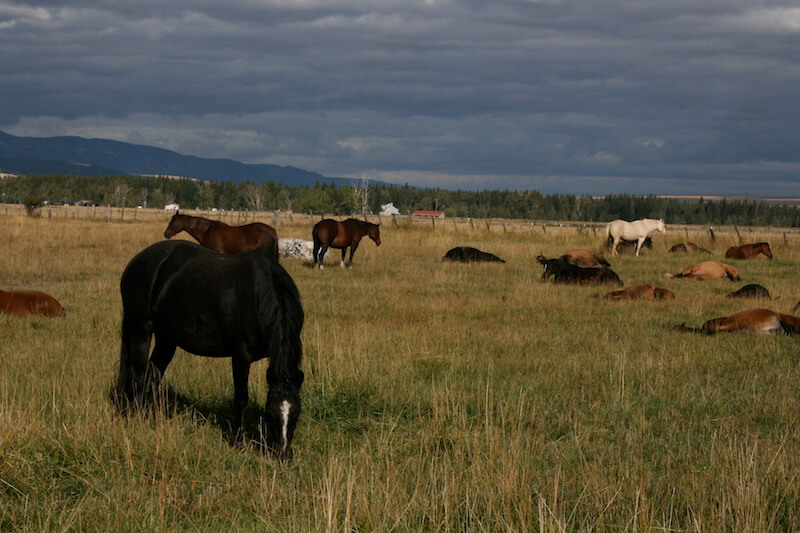Why You Shouldn’t Feed Your Horse Like a Cow
by Eleanor Blazer

It’s a common rural sight: horses and cattle pastured together and serenely grazing. Sharing grass may be fine, but what about grain?
The goal when feeding cattle is to maximize rate of gain and keep the animal healthy while keeping costs down. To achieve this, additives are used. One is deadly to horses.
Monensin (brand name Rumensin) is used in some cattle feeds to prevent coccidiosis, a disease caused by a microscopic parasite. It improves feed efficiency, weight gain and aids in milk production. It can also be in supplement blocks. Monensin is fatal to horses, other equids (donkeys, mules, etc.), guinea fowl and dogs. As little as two milligrams of monensin per kilogram (2.2 lbs.) of body weight is toxic to horses. An 1,100 pound horse (500 kg.) would die if it ate 0.035 ounces (1,000 mgs.) of monensin. A small paper clip weighs about 1,000 milligrams or one gram).
Symptoms of monensin poisoning in the horse are: colic, muscle stiffness, sweating, staggering, labored breathing and a severely accelerated heart rate. These are symptoms of many other equine diseases so identifying the poisoning can be difficult. Blood and urine tests can pinpoint the problem. Monensin damages the equine heart and muscles. If a toxic level was eaten, the horse can die a horrible death within several hours. Some may linger for days. Others may seem to recover only to die several weeks or months later of congestive heart failure.
Small amounts of monensin may not kill the horse, but it can cause irreparable heart damage. There is no antidote for monensin poisoning. Supportive care by the veterinarian is all that can be offered. Reputable feed companies are aware of the danger and strive to keep horse feed and cattle feed production lines separate. Cross-contamination is a big concern during manufacture. Flushing the elevator lines, grinders and mixers before running horse feed is imperative if the company also manufactures livestock feed with monensin. Check with the manufacturer of your horse’s feed.
The horses at most risk are those on cattle ranches or feed lots. If you raise cattle or set out supplement feed tubs check the label. Bottom line? Don’t feed your horse like a cow; it could be fatal.
For information about caring for and feeding horses take the online courses “Stable Management” and “Nutrition for Performance Horses” taught by Eleanor Blazer. Earn certification or work toward a Bachelor of Science degree in equine studies. horsecoursesonline.com or thewayofhorses.com.
Published October 2013 Issue

Eleanor Blazer was raised training and caring for horses. She learned to ride and care for the horses her family bought and sold. Many of these horses required improved nutrition when they arrived for training. Eleanor’s experience and research has benefited both horses and horse lovers in the field of equine nutrition. An equine nutrition consultant, based in Bulverde, Texas, she keeps busy doing equine nutrition consultations, conducting seminars, and speaking to youth groups about horse care and nutrition. Eleanor is the author of the syndicated column The Way of Horses. She has more than 20 years experience helping and being a mentor to those wanting to know how to provide the very best care and nutrition for our special friend – the horse.

